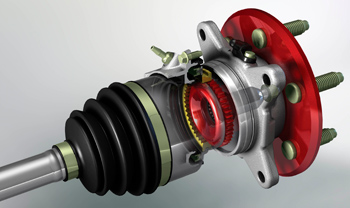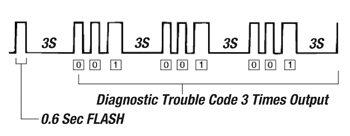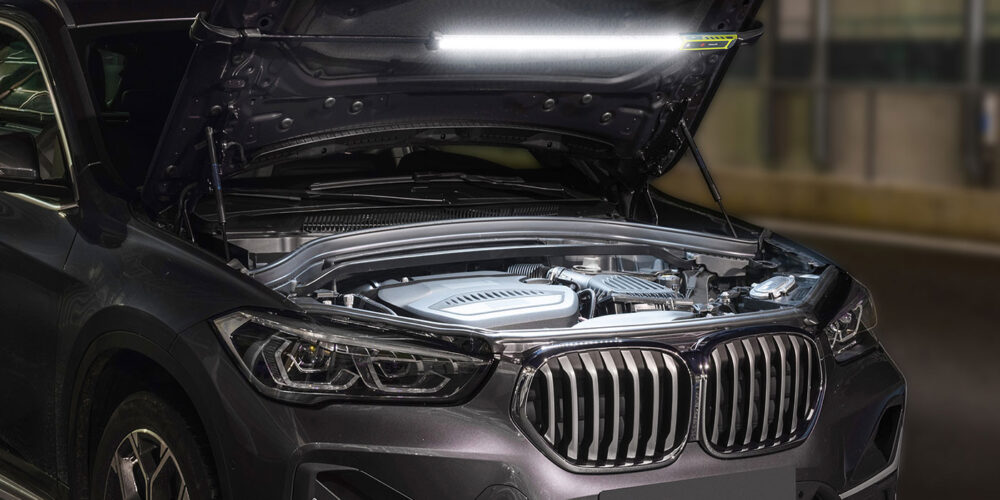 In the past 15 years, Kia four-wheel-drive (4WD) and all-wheel drive (AWD) systems have evolved from vacuum hubs and manual shifting transfer cases to fully electronic systems that use magnetic clutches for push-button operation. While you may never have to replace the entire transfer case or transmission on the popular Sportage and Sorento SUVs, you will have to replace hubs, sensors and solenoids on your customers’ vehicles. In this article, we’ll start with the early systems on the 2000 Sportage.
In the past 15 years, Kia four-wheel-drive (4WD) and all-wheel drive (AWD) systems have evolved from vacuum hubs and manual shifting transfer cases to fully electronic systems that use magnetic clutches for push-button operation. While you may never have to replace the entire transfer case or transmission on the popular Sportage and Sorento SUVs, you will have to replace hubs, sensors and solenoids on your customers’ vehicles. In this article, we’ll start with the early systems on the 2000 Sportage.
The most common complaint you’ll encounter is no 4WD operation, which can usually be traced to problems with the vacuum-actuated front hubs. Kia requires that the driver shift the transfer case into four-wheel-drive, choosing either high- or low-range gearing. The driver must then flip a switch that opens a vacuum-control valve, sending vacuum to the locking front hubs and engaging them to the drive axles. If there’s a weak link in the system, it’s the hubs.
The hubs can cause a couple of problems. The first, and most common, is no engagement. Many times, these troubles can be traced to the vacuum supply, rather than a mechanical problem with the hubs themselves. The first step is to be sure you have vacuum at the hubs with 4WD engaged and the engine running. If not, work backward looking for the vacuum leak; a convenient test point is the “T” fitting by the master cylinder where the lines branch off to the left and right sides. This “T” is downstream of the control solenoid and vacuum storage tank, so if you have vacuum here, you should have it at the hubs.
Many times, the problem is as simple as broken or disconnected vacuum hoses leading to the hub. But, there have been reports of problems with the steel lines running to the wheels. Over the years, these lines can rust, restricting flow and, in the worst cases, causing leaks. There are updated parts available, and Kia has issued a TSB on the subject (see sidebar below), but line replacement can be a tedious task. Many techs report good success with alternate methods of repair, but you’ll have to make the choice as to what’s the best course of action for your situation.
Another problem you can run into with the hubs involves engagement when it’s not called for. Usually described as a noise, in this case the hubs are sticking, and the wheels are engaging and disengaging the drive, the axles and front differential while the transfer case is in the two-wheel-drive position. Many times, simply backing up the truck will take care of this problem, but often it’s an indication that the hubs should come apart to be cleaned and lubed.
Depending on the condition of the original units, replacement hubs may be in order. In the case of the Sportage, road grime that’s finding its way into the hub through the previously discussed vacuum system can cause this problem. If the 4WD isn’t used very often, the broken or disconnected vacuum lines could have been overlooked for quite a while.
REPLACEMENT HUBS
Should you find yourself in the position where replacement hubs are required, or if the customer values reliability over convenience, consider changing over to the almost-bulletproof aftermarket manually operated hubs.
These units provide a low-cost alternative to the automatic units and, while they require the driver to lock the hubs when 4WD is anticipated or required, many customers find it an attractive alternative.
If you do go with the manual hubs, be sure to seal any of the vacuum fittings to prevent debris from getting into the hubs, and disconnect the supply solenoid to prevent a manifold leak when 4WD is selected. It’s also a good time to service the wheel bearings or, at the very least, make any bearing adjustment that’s required.
The rest of the 4WD system on these vehicles presents more service opportunities than diagnostic challenges. Be sure to figure on changing the fluid in both differentials as well as the transfer case when doing a major service on a Sportage. Of course, any work on the hubs will have you also checking the brakes.
4WD & AWD ON LATE-MODEL KIAS
Looking at the later-model 4WD Kias, we see them moving away from locking hubs that engage the 4WD, and moving toward systems that de-couple the 4WD differential from the primary drive.
After a short hiatus, the reinvented Sportage was back on the market in 2005. Kia made big changes, one of which was going with a lighter duty, crossover-type FWD platform vehicle that engages the rear wheels to provide AWD as needed with a driver-controlled, lock-up option.
By looking at various sensors, the control unit decides when torque will be delivered to the rear wheels and at what percentage. By looking at individual wheel speeds and throttle position, brake input and steering angle, the control module will send a command to the rear differential-mounted coupler, applying the appropriate pressure to the internal clutch pack for the given conditions.
While the coupler handles the varying load, the continuously engaged, transaxle-mounted transfer case does the job of keeping the driveshaft spinning.
If the conditions require 4WD operation, the driver can choose to lock into FWD, providing the maximum 50/50 split to both axles. Designed for low-speed operation, the control unit will begin to disable the lock at 18 mph, and, at 25 mph, the lock system is fully disabled. As speeds come down, the lock feature will re-engage. Being speed dependent, if there is a problem with the wheel speed sensors, the lock option is disabled.
REPAIR ISSUES
When it comes to potential problems, most will be mechanical issues, noises or vibrations. Instead of two CV axles there are four, and you have to consider the driveshaft as the shakes and noises are diagnosed. The wheel bearings and hubs are no different than what we see on any 4WD or AWD vehicle. The only serviceable items in the coupler are the bearings.
If you’re faced with a blinking 4WD lamp on the dash, or a suspect a problem with the system, it will be difficult to go much further without a scan tool that has enhanced software that will give you access to codes and data. Even with the very good information on the free Kia service information site (www.kiatechinfo.com), you would be hard-pressed to have a successful outcome without the tooling.
With the transfer case mounted to the transaxle, when it comes to maintenance on the system, it’s easy for an inexperienced tech to think they share lubrication. That is not the case with the Kia and it’s important that the fluid level in the transfer case be checked and replaced on the same interval as you recommend for the transaxle.
THE SORENTO SYSTEM
The Kia Sorento models up to 2009 offered both a part-time on-demand system, as well as an optional full-time AWD system. We’ll take a look at the part-time system that Kia refers to as “Electronic Shift Transfer (EST),” that uses an electrically controlled transfer case as well as an air pump system to engage the front axle. This allows for shifting “on the fly,” from 2WD to 4WD, applying a fixed amount of torque. When in 2WD, the front “free running differential” is decoupled from the driveshaft, eliminating any noise or vibration while also eliminating the need for locking hubs.
When the 4WD switch is selected, an electric air pump is commanded on to pressurize the coupler, engaging the front differential pinion to the driveshaft, while the transfer case-mounted motor moves the shift forks. Then, finally, the magnetic clutch closes, providing torque to the front driveshaft. This is all controlled and monitored by the transfer case control module (TCCM). With either system, the vehicle has to be stopped to engage 4WD low range. 
Like the Sportage, if the TCCM sees a problem, the 4WD lamp will flash. No tool is required to retrieve codes with the EST system. When no codes are present, turning the key on should result in the 4WD lamp lighting for 0.6 seconds as a bulb check, and then it will turn off. If codes are present, the bulb check will be followed by a flash code in three seconds. There are seven codes available using ones and zeros. A short 0.5-second flash represents a zero, while a one-second flash indicates a one. The code will repeat itself three times; for example two shorts and one long flash is 001 (see flash diagram above).
There have been some problems with both the transfer case motor and air pump used for the differential coupler. That’s not too surprising, considering that the system spends most of the time in two-wheel operation. Sometimes, a simple tap on the transfer case shift motor or air pump will shorten the diagnostic process. Of course, a motor that comes back to life with a tap is certainly suspect and should be replaced, but that’s between you and the customer.
If you do find yourself diagnosing the front differential coupler, keep in mind that it operates on 5-8 psi, so don’t just put the shop air to it. When it comes to maintenance, the transfer case fluid is critical to long bearing and clutch life, so much so that transfer case oil pumps are used to keep it moving; be sure it’s checked and changed with the recommended fluid.
On all 4WD or AWD systems, tire size conformity is critical. The first diagnostic step for any problem should be to measure tire circumference. While the method doesn’t matter (we measure circumference with a narrow tape), just be sure they are the same size. Ideally, they will all be within 1/16”. Much more than that should bring up the discussion of tire replacement, especially if the problem involves binding or engagement issues in an on-demand system that appears to operate as expected.
On automatic or AWD systems, tire size is even more critical as the system sees the speed differential of the tire size as slippage and adjusts accordingly. It’s easy to see how this would shorten the life of the clutches. This is why it’s so important that tires be replaced only in sets of four.
——————————————————————
<!–[if gte mso 9]>










